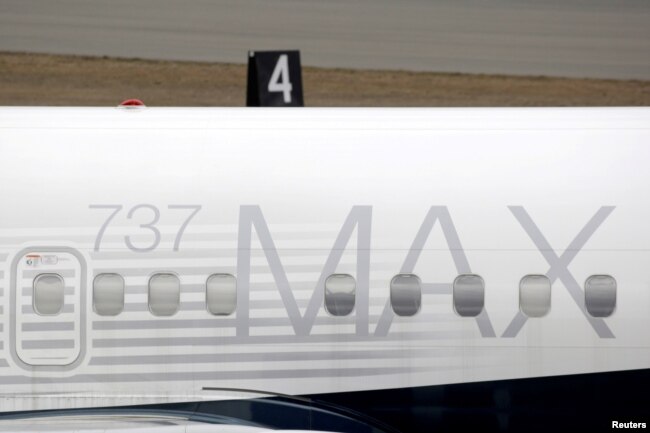The U.S. Federal Aviation Administration (FAA) on Sunday disclosed a new problem involving Boeing Co’s grounded 737 MAX, saying that more than 300 of that troubled plane and an older model 737 may contain improperly manufactured parts and that the agency will require these parts to be quickly replaced, VOA news reports.
The FAA said up to 148 leading edge slat tracks manufactured by a Boeing sub-tier supplier are affected and cover 179 MAX and 133 NG aircraft worldwide. Slats are movable panels that extend along the front of the wing during takeoffs and landings to provide additional lift. The tracks guide the slats and are built into the wing.
In a statement issued after the FAA announcement, Boeing said it has not been informed of any in-service issues related to this batch of slat tracks. Boeing, the world’s largest plane maker, said it has identified 20 737 MAX airplanes most likely to have the faulty parts and that airlines will check an additional 159 MAXs for these parts.
Boeing said it has identified 21 737 NGs most likely to have the suspect parts and is advising airlines to check an additional 112 NGs. The NG is the third-generation 737 that the company began building in 1997.
The 737 MAX, Chicago-based Boeing’s bestselling jet, was grounded globally in March following a fatal Ethiopian Airlines crash after a similar Lion Air disaster in Indonesia in October.
The two crashes together killed 346 people.
Boeing has yet to submit a software upgrade to the FAA as it works to get approval to end the grounding of the 737 MAX.
The FAA said a complete failure of a leading edge slat track would not result in the loss of the aircraft, but a failed part could cause aircraft damage in flight.
The FAA said it will issue an Airworthiness Directive to require Boeing’s service actions to identify and remove the parts from service, and operators will be required to perform this action within 10 days, but can continue to fly the planes during the 10-day period before the parts are removed.
Boeing said one batch of slat tracks with specific lot numbers produced by a supplier was found to have a “potential nonconformance” and said airlines “are to replace them with new ones before returning the airplane to service.”
The company said it is “now staging replacement parts at customer bases to help minimize aircraft downtime while the work is completed.” Boeing said once new parts are in hand, replacement work should take one to two days.
A separate service bulletin will go to 737 MAX operators to do inspections before the MAX fleet returns to service.
The FAA said Boeing has identified groups of both 737 NG and 737 MAX airplane serial numbers on which these suspect parts may have been installed, including 32 NG and 33 MAX in the United States. The affected parts “may be susceptible to premature failure or cracks resulting from the improper manufacturing process,” the FAA said.
The issue was discovered following an investigation conducted by Boeing and the FAA Certificate Management Office, the agency said.

